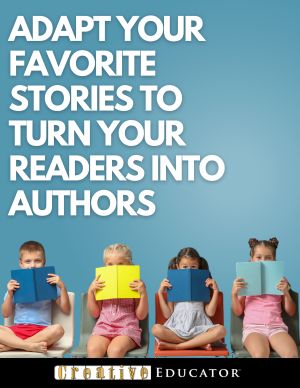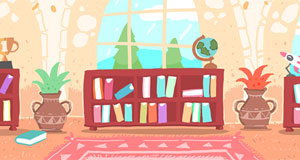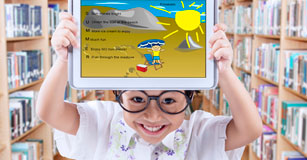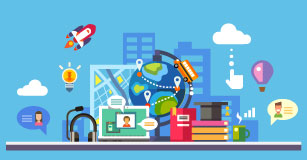5 reasons to use technology
in your reading program
How creative digital tools can engage your learners more deeply in the reading process
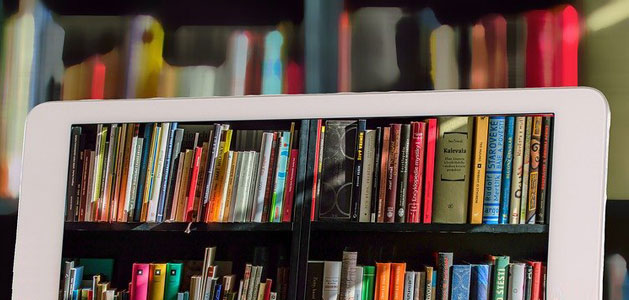
Technology is an integral part of almost every aspect of life today. While reading will always be an essential skill, a digital approach makes sense with today's mix of in-class, at-home, and hybrid learning. Today's creative digital tools don't need to distract students from reading and can help engage your learners more deeply in the literature and informational texts they are reading.
Today's creative digital tools don't need to distract students from reading and can help engage your learners more deeply in the literature and informational texts they are reading. Digital project work can help you connect learners to the books they read, better evaluate their comprehension, and build essential literacy skills like vocabulary, research, and fluency. Here are 5 reasons why integrating technology makes sense for your reading program.
1. Digital learners need to be engaged
According to surveys by Common Sense Media, children today spend an average of 3-9 hours in front of a screen every day. While some of that may be using an eReader, much of it is playing games and consuming video. Today's students expect to use technology, but that doesn't have to mean rote practice or simply consuming media.
Make comprehension work engaging by asking students to practice reading and writing in real-world situations. Technology helps by providing powerful tools, like Wixie, that make it easy to create products like those they see in the world around them. Technology also makes it easy to share work with an audience beyond the classroom.
Whether they are creating eBooks, comics, or public service announcements, when someone beyond their teacher views their work, students are motivated!
2. Technology can make informational text as exciting as fiction
Creativity is one of the hardest of the 4 C's to teach, yet innovation is essential to the modern economy. While reading fiction exposes students to an author's creativity, many educators find it harder to work creativity into informational text projects. Push your students to combine the knowledge they are learning with both analytical and creative thinking by changing the product or performance they create as a response to the information they are reading.
3. Technology is especially helpful in supporting English Language Learners
To build fluency in a second language, students must develop skills in listening, reading, writing, and speaking. Language acquisition expert Stephen Krashen suggests that true acquisition is, "an unconscious process when language is used for real communication purposes." We can encourage this process by giving students meaningful and authentic opportunities to both listen and produce language. Technology helps by making it easy to edit written work, engage with ideas and content in multiple modalities, and practice oral fluency without stress as they record, listen, and rerecord.
4. Standards demand it
Modern learning standards embed the need to conduct research and to produce and consume media into every aspect of today's curriculum! Standards also share the responsibility for teaching literacy with all disciplines, technology and media literacy should be a seamless part of language arts instruction. The themes, literature, and informational text in your reading program make it easy to connect reading to making.
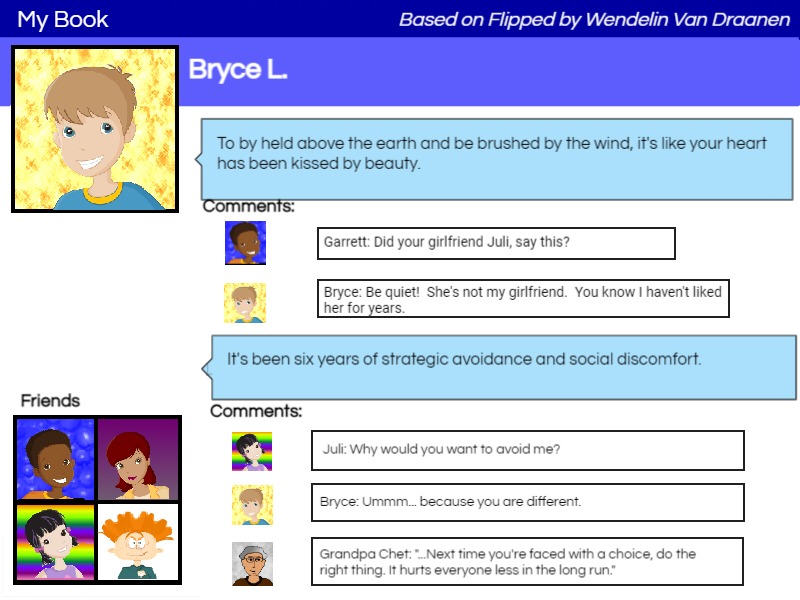
5. Helps you bridge in-class and at-home learning
Many sites have already taken advantage of online tools so student can more easily move from an in-class to an remote learning environment. When students are already familiar learning in a digital approach in-class, the transition to home learning is seamless. Digital tools like Wixie can be used across devices and anywhere students have an Internet connection.
When students ask to work on #geniushour projects at home and show up with this! @jodiloneill @jcd118 @WellwoodIntlES @geniushour #wixie pic.twitter.com/R0zfKXKJlG
— Sara Lee (@SaraLeeTeacher) June 8, 2017
Use your favorite books to get started
Combine digital tools, like Wixie, with your favorite stories to welcome your students to school, make them authors immediately, and show them how exciting learning can be. For example, turn the pattern from your favorite picture book into a sentence stem your student can use for their own version of the story, like this example from Donald Crew's Ten Black Dots.
Technology and books are great partners across the curriculum too:
Today's creative digital tools don't need to distract students from reading. Instead, take advantage of student's interest in technology to engage them more deeply in the literature and informational texts they are reading.
Editor's Note: This article first appear on the Tech4Learning blog on March 4, 2018.




